What are Grow Lights for Indoor Plants in 2025?
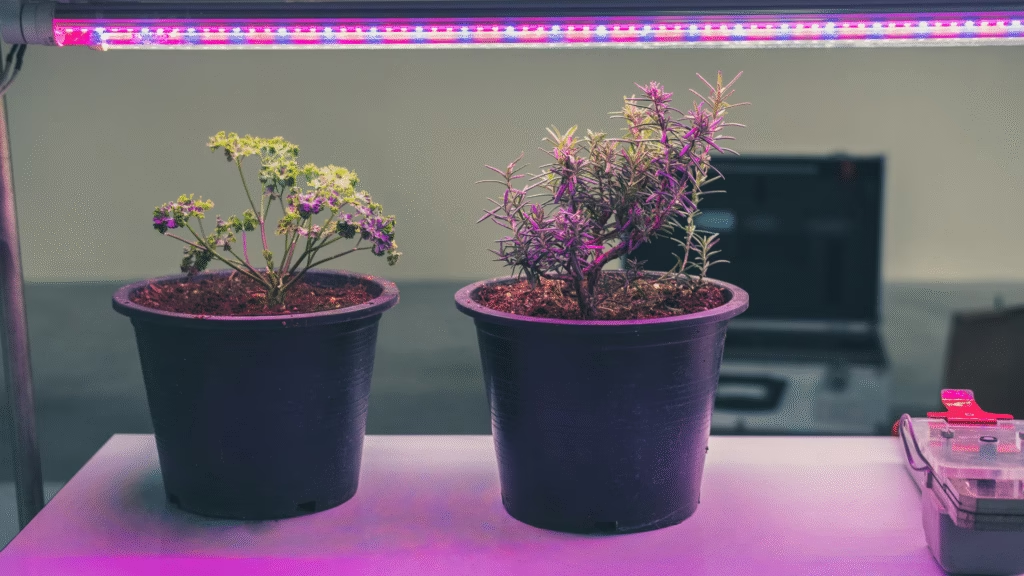
What are grow lights for indoor plants in 2025? Discover how modern lighting solutions are transforming indoor gardening. From full-spectrum LEDs to low-cost options for balconies, learn how to grow thriving plants even without sunlight, no matter where you live.
Some of us live in apartments where the light barely filters through those tinted windows or grilled balconies. Even those living in bungalows/villas may have one bright room while other rooms are dim. And for those living in cities with towering skyscrapers, pollution, and or houses built right and left – light is precious real estate.
Grow lights are lights made to mimic the magic of sunlight artificially to help your plants survive and thrive indoors. Grow lights were once mainly used for commercial growers or farming enthusiasts, but now they are widely available for residential house plants in various styles, sizes, and varying strengths.
If you want to know more about grow lights, what are they? how to use them? what are the different types, and which light spectrum is best for which plant? then read more to find out!
Related Reads:
- Which is the Best Mattress for Your Bedroom? 2025
- Which Bed is Best for Your Bedroom? Complete Guide
- False Ceiling Designs For Bedroom
- 37 Small Space Saving Tips You Should Know
- Finding The Best Curtain Type for Your Living Room
- Best Buying Guide on Big Carpets
- 10 Hard To Kill Indoor Plants For Busy People
What are Grow Lights for Indoor Plants?
Grow lights are artificial lights made to mimic the sun. They’re a great tool to create the right amount of brightness – the kind that plants need – to aid in photosynthesis, grow strong stems, bring out new leaves, and even help your indoor plant to flower indoors.

The sunlight is made up of different wavelengths. Blue, red, warm white – all of it plays a part in how a plant develops. Grow lights are made to replicate the same magic of natural sunlight indoors.
Think of them as curated sunlight requirements tailored to your plant’s need indoors.
Using a grow light isn’t a science experiment, it’s just another lighting setup you can put in your home if you’re a plant enthusiast. It’s about loving your plants enough to give them what they need to survive and thrive if you don’t have enough sunlight coming in your home.
It can be thought of as wellness equipment for your plants or another type of home decor if your interior is modern and industrial. If that’s your home’s vibe, then adding grow lights will be like an extension to your style.
Which Plants Benefit the Most from Grow Lights?
Low-light tropical
You are not able to provide the perfect lighting conditions to every plant you bring home. Not everyone’s indoor plant gets the light it needs, no matter how much you try to find the right spot, it is just never enough, and you’ll start noticing the side effects of insufficient or too much light on your plant with time.
Low-light tropical plants such as peace lilies or calatheas are forest-floor plants that are used to dappled light or filtered indirect bright light. If you aren’t able to provide them with a similar kind of lighting, then you’ll start seeing the adverse effects of it soon enough.
Grow lights do well in this situation by helping you mimic that kind of needed light perfectly without overwhelming the plant.
Herbs and microgreens
Herbs and microgreens are delicate, fast-growing plants that thrive with a consistent level of light. If you love cooking or a fresh sprinkle of greens, grow lights can help you keep your kitchen garden alive year-round.
Succulents in winter or cloudy regions
While Succulent plants such as Echeveria, Aeonium, Cactus, Kalanchoe, Senecio, and Crassula, etc., are low-maintenance, they love light. Succulents need at least 6 hours of sun everyday to thrive, depending on the type of succulent.
Though most varieties of succulents will not be able to withstand full shade, they also won’t be able to withstand direct hot rays of the sun all day long. Usually, a sheer curtain is used to help ensure they get just enough light and shade. You can use grow lights to provide indirect bright light while keeping it indoors without all that hassle.
Flowering indoor plants like orchids and anthuriums
If you love flowering plants like orchids or anthuriums, then you already know they ask for just the right amount of everything. Growing lights help your flowering plants bloom indoors beautifully and reliably, without forcing you to chase the sun.
People have been using grow lights to grow and harvest flowering plants like saffron perfectly to start their own saffron business at home (though there are a few more requirements needed for that, but we’ll hopefully deal with that topic in another guide).
How to Use Grow Lights for Indoor Gardening?
If you’re just starting out with grow lights like a total beginner, then let me tell you — it’s not as technical as it sounds. It’s just about recreating what nature does best, with a little help from science and a lot of love for your plants.
How to Use Grow Lights for Beginners?
Where to place the grow light and how far the light should be from the plant
It’s best to place the grow light directly above the plant and not sideways. I’ll tell you why in a minute, but first, it is important to understand that distance plays a crucial role in the working of grow lights.
Distance matters.
Your grow light shouldn’t be right in the face of the leaves, nor too far that it feels like a dull winter’s sun. As a general rule, keep your grow light 6 to 12 inches above the plant – closer for low-light intensity LEDs, a little farther for strong bulbs.
Rotating plants and managing heat
Plants lean towards the light. To keep them from growing lopsided, rotate them every few days so that light touches every side of the plant for even growth.
I made this mistake with my Algaonema (Chinese Evergreen). I forgot to rotate it, and it grew lopsided, leaning towards the light, and only the side facing the light grew leaves, and the other side did not. It was not pretty.
However, some plants, like trailing plants (climbers), don’t need the light directly above them. It isn’t necessary since they don’t always grow upwards.
It’s all about maintaining the balance. The grow light should be kept at a distance that’s required by the plant type. A little research about your plant will let you know just how much light it needs. At the start, you may have to observe your setup just to make sure your plant is adjusting to it.
Also, monitor for heat level – even the best grow lights can get a little toasty. A bit of distance and airflow goes a long way.
Hours of usage (typically 12-16 hours)
Most indoor plants do best with 12 to 16 hours of light a day. This duration mimics the longer days of spring and summer, which is when most plants thrive. But don’t overdo it – plants need rest too, and they need a dark phase to breathe.
Smart plugs and automation for low-effort maintenance
Invest in smart plugs or timers. Set them up once, and your plants get their light every day, clockwork, no stress, no forgetting. The lights will work on a schedule. Timers will help you mimic the natural morning and night cycles that plants experience in their natural environment.
This one tip will save your time and effort, like it has saved many others.
To give you an example of how a timer works, it’s setting are like:
- Seeding: 16-18 hours of light per day
- Hydroponic lettuce and Herbs: 12-14 hours per day
- Foliage plants: 12-14 hours
- Flowering plants: 14-16 hours
- General rule: most plants benefit from 8-10 hours of darkness
Balance and consistency will get you beautifully thriving plants.
Tips when using a timer: Check the timer’s ratings – ensure that your grow light timer can handle the wattage of your light. Make sure to test the timer to make sure it works correctly before fully committing to it.
Common Mistakes to Avoid
Burning the plants
Using the wrong spectrum for flowering plants
Leaving lights on 24×7
Buying fancy lights without checking specs (spectrum)
Types of Grow Lights Available in the Market
- Incandescent
- Fluorescent
- LED (Light Emitting Diode)
- High Intensity Discharge (HID)
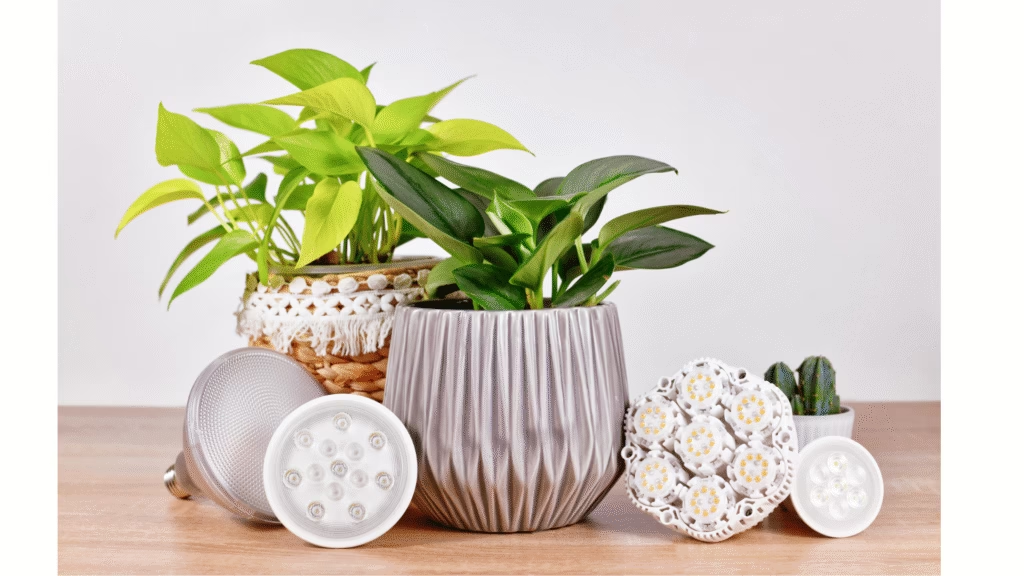
When to Upgrade To Advanced Setups?
Start small. Always. That’s what I believe. If you’ve been using basic LED bulbs as grow lights or a small light bar and your plants are thriving, don’t rush. But if you’ve started noticing yellowing, leggy growth, or slowed blooming despite your efforts.
If you’re propagating plants seriously, growing edibles indoors, or your plant corner turns into a plant room, that’s when investing in a proper full-spectrum setup makes sense. It’s not about buying the fanciest thing; it’s about listening to what your plants are asking for.
Do LED Lights Work as Grow Lights?
Short answer? Yes. But not just any LED light. Those soft white ceiling LEDs won’t do the job. Plants need full spectrum, especially blue and red wavelengths, to photosynthesize properly. Many modern grow lights are LEDs nowadays, just built differently: more focused, more intense, more tuned to plant needs. So yes, LEDs work, but choose the ones designed for plants, not simple home decor.
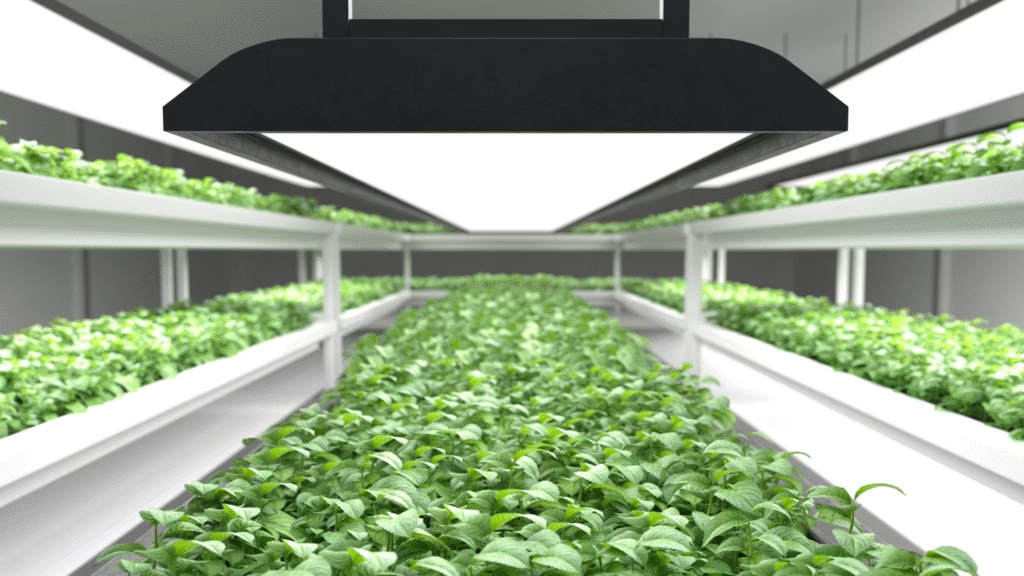
Best Grow Lights for Indoor Plants
Most houseplant owners looking to get grow lights can choose small-scale applications and full-spectrum LED grow lights. LED grow lights are the best choice for houseplants because they are cost-effective, easily available, and energy-efficient.
Low-Cost Grow Lights for Balcony Gardens
If your balcony gets weak sunlight or you’re growing plants during monsoons or winter, even the simplest clamp-on LED grow light or strip light can work wonders. No need to break the bank. Look for budget-friendly options on Amazon, Flipkart, or local online stores.
Just check for full-spectrum lights and take the time to go through real user reviews. Start with one – test it and see if it’s for you.
The goal isn’t a greenhouse setup; it’s helping your greens breathe a little easier.
Grow Lights vs Sunlight for Indoor Plants
Sunlight is THE source of light we all need for our health. No artificial light can compare. No matter how fancy or full-spectrum, it can truly match the richness and rhythm of natural sunlight. That said, grow lights aren’t here to replace the sun; they’re here to support us when it’s missing.
Think of them like a backup generator. They keep your plants growing when we aren’t able to access natural light of the sun.
They’re not a cheat code. They’re a thoughtful tool for the times you can’t give your greens what they need directly.
Where to Buy Grow Lights in India?
Plant parents in India, looking to buy grow lights for their indoor plants, should start with:
- Amazon India: Features a range of grow lights, including full-spectrum options suitable for various indoor plants.
- Flipkart: Flipkart is like Amazon, only Amazon has many more options to choose from. But for those who prefer Flipkart as their online shopping platform are in luck. Flipkart also keeps a good list of indoor grow lights.
- Fluortronix: An Indian manufacturer specializing in LED grow lights for indoor agriculture and horticulture. Fluortronix LED Grow Lights.
- Leafy Island
- Trust Basket
- Ugaoo
Where to Buy Grow Lights for International Buyers?
International buyers, especially if you’re based in the US, UK, Canada, or Australia, you’re in luck – you can begin your search for their required grow lights with trusted retailers like Amazon, Home Depot, Lowe’s, or Modern Sprout.
All of these offer a wide range of grow lights suited for different plant needs and home setups.
Unlike in India, where grow light awareness is still emerging, many international markets have had early exposure to these tools, making product availability and user feedback far more extensive.
For a reliable roundup of options, you can also check this article by The Spruce – it has a list of different grow lights all reviewed and tested. It’s a well-researched list backed by real usage insights for international readers.
Systems like AUK Smart Indoor Herb Garden – a Scandinavian innovation known for its sleek design, grow light adjustment, automatic watering, and hydroponic fertilization (all working on auto-pilot mode).
AUK Indoor herb garden is growing in popularity, especially in Europe and North America, and is soon working its way to become a staple in kitchens around the world (check their international shipping).
List of Popular Grow Lights in the International market:
United States
For those in the U.S., there are several reputable retailers:
- The Home Depot: Offers a variety of grow lights suitable for different plant needs.
- LED Grow Lights Depot: Specializes in LED grow lights for both home and commercial use. LED Grow Lights Depot
- Grow Light Central: Provides a range of LED grow lights, including options for various budgets. LED Grow Lights Depot
United Kingdom
In the UK, consider these options:
- London Grow: has grow lights from leading brands, catering to both beginners and professionals. londongrow.com
- One Stop Grow Shop: Offers a wide selection of LED grow lights with optimized spectrums. onestopgrowshop.co.uk+1Fluortronix LED Grow Lights+1
- LED Grow Store: Specializes in LED grow lights, including smart grow tent kits. The Sun+16ledgrowstore.co.uk+16growlights.ca
Canada
For Canadian residents:
- GrowLights.ca: Provides a broad range of grow light systems and hydroponic equipment. LED Grow Light Shop Australia
- Canada Grow Supplies: Offers LED grow lights, tents, nutrients, and hydroponic systems. Canada Grow Supplies
Australia
In Australia, you might explore:
- LED Grow Light Shop: Australia’s oldest online LED grow lighting retailer, offering a variety of options. LED Grow Light Shop Australia
- Grow Lights Australia: Provides full-spectrum LED grow lights designed and built in Australia. Grow Lights Australia
- Cheeky Plant Co: Offers clip-on grow lights, making installation easy and convenient. Cheeky Plant Co.
Reference:
- “NASA Research Boosts LED Lamps for Home and Garden” by NASA
- “LED Systems Target Plant Growth” by NASA
- “The 10 Best Grow Lights, Tested and Reviewed” by The Spruce.com
- Gardeners.com (Gardener’s Supply Company) – offers tried and tested grow light stands.
- “9 Best Grow Lights r Indoor Plants in 2024” by Good Housekeeping.com
- “The 11 Best Grow Lights, Tested by BHG” by Better Homes & Gardens.com
- Wirecutter (by The New York Times) – They have in-depth product testing, reviews, and buying advice, including testing and reviews of the complete grow light systems and their alternatives.
FAQ
Can any LED light be used as a grow light?
No, not really. Not every LED light can be used as a grow light. To help plants photosynthesize and thrive, they need light that mimics the sun’s light. You need the red and blue wavelength light specs that are present in natural light.
Do grow lights really work for indoor plants?
Yes. Grow lights do work for indoor plants. They were initially developed to help farmers and indoor gardeners grow plants indoors. Now these lights are being produced for plant parents who don’t get enough light at home to grow their plants. But be sure to use them correctly. Keep trying and don’t give up!
How many watts for grow lights?
As a general rule, when using LED grow lights, you should aim for around 30-50 watts per square foot of grow space, while for traditional grow lights, you should aim for 50-80 watts per square foot of grow space.

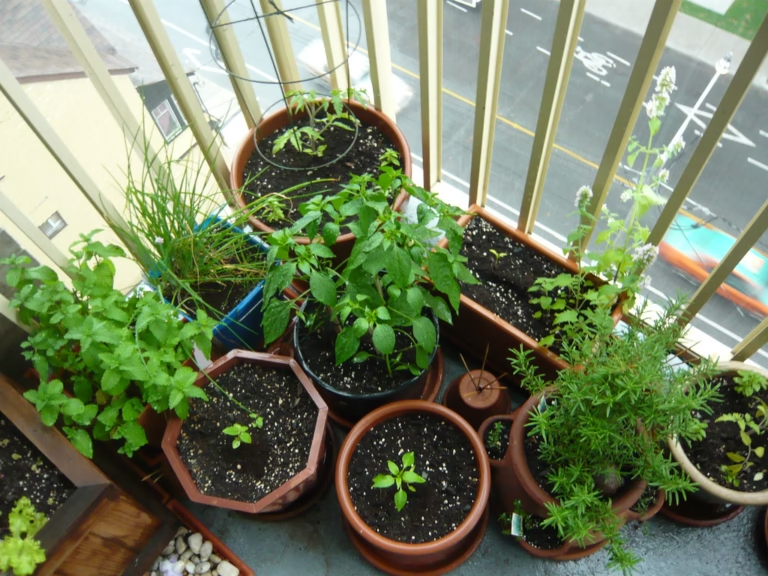


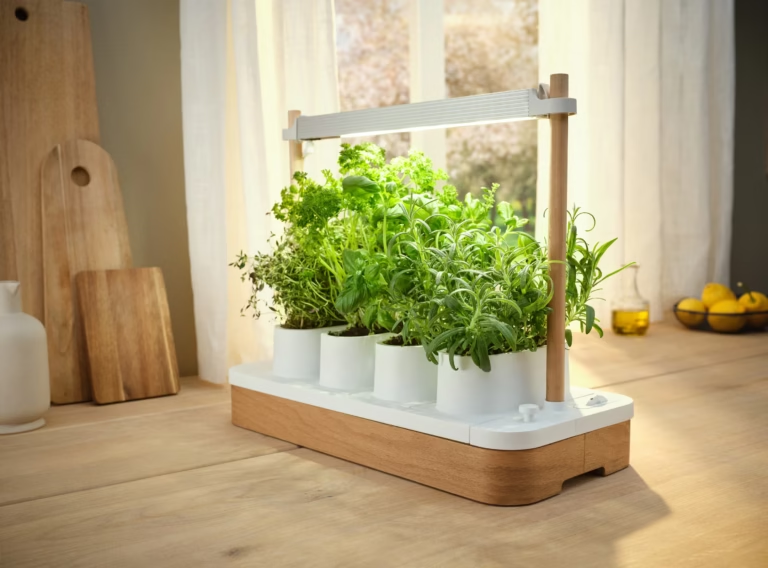


Nice read, I just passed this onto a friend who was doing some research on that. And he actually bought me lunch because I found it for him smile Thus let me rephrase that: Thanks for lunch!
You have no idea how much this means to me to hear you say this! Not only did this make me smile but it gave me the confidence to work harder. Thank you! 🙂